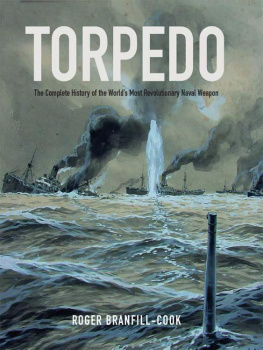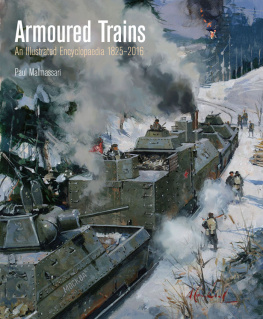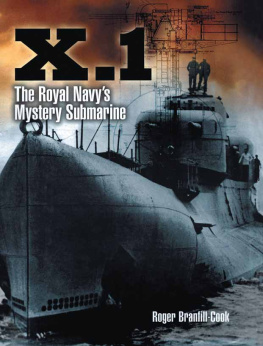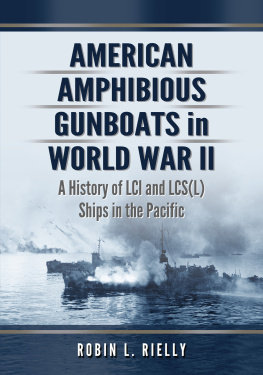RIVER GUNBOATS
Austro-Hungarian Monitors Szamos (foreground) and Leitha (background) as they appeared during the First World War. (Photo courtesy of Erwin Sieche)
RIVER GUNBOATS
AN ILLUSTRATED ENCYCLOPAEDIA
ROGER BRANFILL-COOK
Copyright Roger Branfill-Cook 2018
This edition first published in Great Britain in 2018 by
Seaforth Publishing,
An imprint of Pen & Sword Books Ltd,
47 Church Street,
Barnsley
South Yorkshire S70 2AS
www.seaforthpublishing.com
Email:
British Library Cataloguing in Publication Data
A catalogue record for this book is available from the British Library
ISBN 978 1 84832 365 0 (Hardback)
ISBN 978 1 84832 366 7 (Kindle)
ISBN 978 1 84832 380 3 (ePub)
All rights reserved. No part of this publication may be reproduced or transmitted in any form or by any means, electronic or mechanical, including photocopying, recording, or any information storage and retrieval system, without prior permission in writing of both the copyright owner and the above publisher.
The right of Roger Branfill-Cook to be identified as the author of this work has been asserted by him in accordance with the Copyright, Designs and Patents Act 1988.
CONTENTS
Country Chapters
The earliest British river gunboats were officially owned by the Honourable East India Company. However, they operated under Royal Navy control during their various operations, and are to be found in the Great Britain chapter. Conversely, the river gunboats used on the Nile flew the Egyptian flag, and will be found in the chapter on Egypt.
The breakup of the Austro-Hungarian Empire, the collapse of Yugoslavia, and the capture of vessels in the course of conflicts, meant that many river gunboats passed through several hands, and through several modifications. Their chronological history is followed through the various individual country chapters.
INTRODUCTION
Inspiration
Like many of my generation, my own interest in river gunboats began with Robert Wises masterful film interpretation of The Sand Pebbles in 1966. Who could forget Steve McQueens Hello Engine, or the desperate fight at the barrage of junks, when Richard Crennas Captain Collins tries to redeem his small gunboats honour? The same year came the depiction of General Gordon in Khartoum , with the mystery of what happened to his gunboat Abbas , despatched to fetch help. The reissue on DVD of the classic Korda 1939 colour movie The Four Feathers reminded us that Kitcheners old gunboat Melik was still with us. I was two years old when John Huston filmed The African Queen , but I came to know and love it when the classic movie was screened on British TV nearly every Christmas holiday. Thus began my fascination with the lake gunboats of Africa.
Defining the Scope of this Encyclopaedia
Mounting a cannon on any small oared craft capable of carrying it immediately transformed it into a gunboat. The size of the Danube meant that some river gunboats employed there were in fact small sailing warships. The restrictions of most rivers, however, ruled out the use of sail power, and the size and weight of cannons increased to the point where oar power also became impractical.
The use of the classic river gunboat came into its own in the nineteenth century with the introduction of the steam engine, and this work concentrates on gunboats powered by steam or internal combustion engines, to the exclusion of purely oar or sail power. Now the smaller gunboats could penetrate deep inland, moving upriver against strong currents, attempting the independent passage of rapids in narrow gorges which had previously defied sailing or oared vessels and required, in appropriate cases, assistance by rope haulage from the banks.
With the advent of steam power, the gunboat became the smallest type of warship able to project naval power, whether used to protect harbours and coastlines such as the flatiron type used by the Royal Navy or for patrol and policing duties, or simply as a presence in far-flung parts of the world. The term gunboat diplomacy came into being to recognise the influence these small vessels could bring to bear.
Ocean-going gunboats with relatively deep draft were in fact used to penetrate quite far up major rivers. Their use continued into the First World War period in Mesopotamia, and up to the Second World War on the lower stretches of the Yangtze and other Chinese rivers, where the opposing Japanese and Chinese navies deployed large vessels including destroyers and cruisers. In the case of ocean-going sloops and gunboats, I have provided representative examples of the types of vessel involved.
The American Civil War saw the first large-scale use of steam-powered gunboats on the North American river systems. The scope of the conflict also introduced the widespread conversion of commercial riverine craft to warships. For the sake of completeness, this encyclopaedia includes ACW riverine vessels nominally designated as rams if they also carried gun armament, especially behind armour. A contemporary use of armoured river gunboats occurred in China during the bloody civil war which pitted the Taiping rebels against the Emperor, when Gordon set up his headquarters on board the side-wheel paddle steamer Hyson .
With the advent of iron construction, the Royal Navy pioneered the technique of constructing a sectionalised gunboat in a British yard, for transport abroad and reassembly at the chosen destination. The prototype was HMS Mohawk of 1843, a side-wheel paddle steamer built to patrol Lake Erie. She was closely followed by her American counterpart USS Michigan . In France Napoleon III proposed and oversaw the production of drawings for sectionalised river gunboats to use on rivers and lakes during his Italian campaign of 1859. Subsequently, the French built large numbers of such craft for river warfare in Indochina and elsewhere.
The British continued the trend with two Peruvian gunboats intended for used on Lake Titicaca, which were designed in 1862. The extremely difficult transport of their hundreds of individual parts on the backs of mules and the carrying of their sectional propeller shafts on the backs of porters up the slopes of the Andes, however, meant that the first vessel did not in fact enter service until 1870.
The gunboats on Lake Titicaca were examples of the pin-built form of construction, whereby the vessels consisted of hundreds of individual pieces, small enough to be man- or mule-ported over considerable distances. Before leaving the builders shipyard, the individual hull and deck plates would be trial-assembled to the ribs by bolts. They would then be disassembled, numbered and carefully packed into cases for transport overseas. On arrival on site, the hundreds of parts would be permanently assembled using rivets. The process involved sending skilled supervisors to accompany the kit of parts, and to oversee the work of reassembly by local workmen. On more than one occasion, the design plans would not arrive on site with the kit of parts, providing a major headache for the supervisor. One of the last military usages of pin-built vessels was the overland transportation of the German steamer Graf von Gtzen to Lake Tanganyika in 1915, but steamers intended for service on Lake Victoria were transported in thousands of pieces up to modern times.
The other form of this type of vessel was the knock-down construction, whereby the hull and superstructure would be pre-assembled in complete sections. Once again, following initial assembly with bolts, they would be dismantled for overseas transport, often on the decks or in the holds of cargo ships. The relatively large size of each section compared with the small parts of the pin-built version meant that they had to be carried on railway or road wagons, or even floated down rivers. In the case of the hull sections, this form of construction often continued to use bolts to hold the sections together. In period photos, the numbers marked on adjacent sections can be clearly seen. Napoleon IIIs floating riverine batteries were of this type, as were many Nile and China gunboats.















